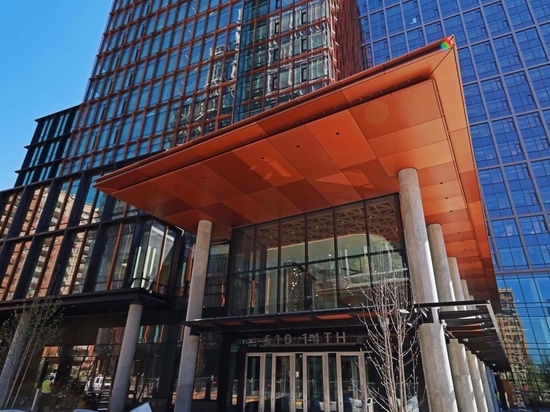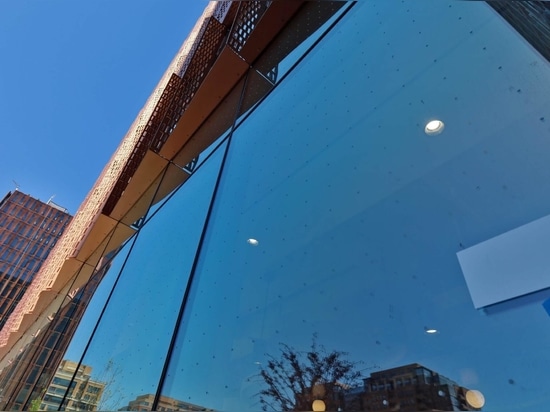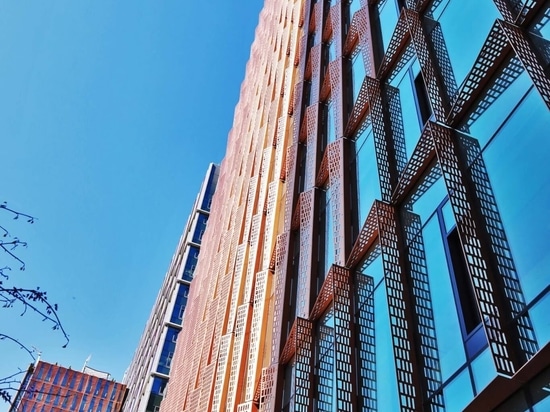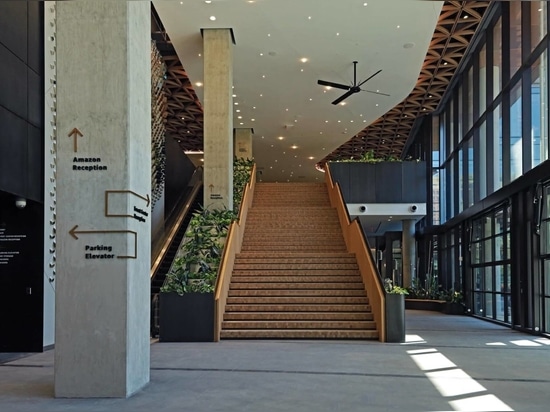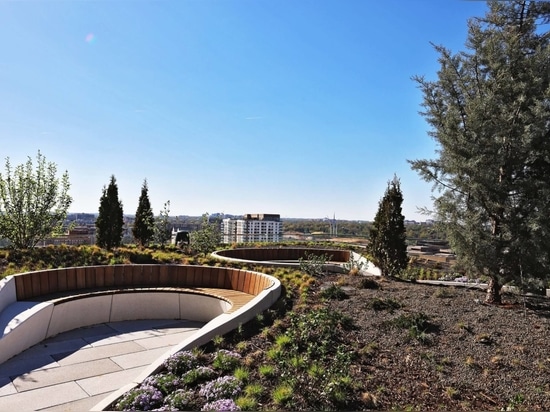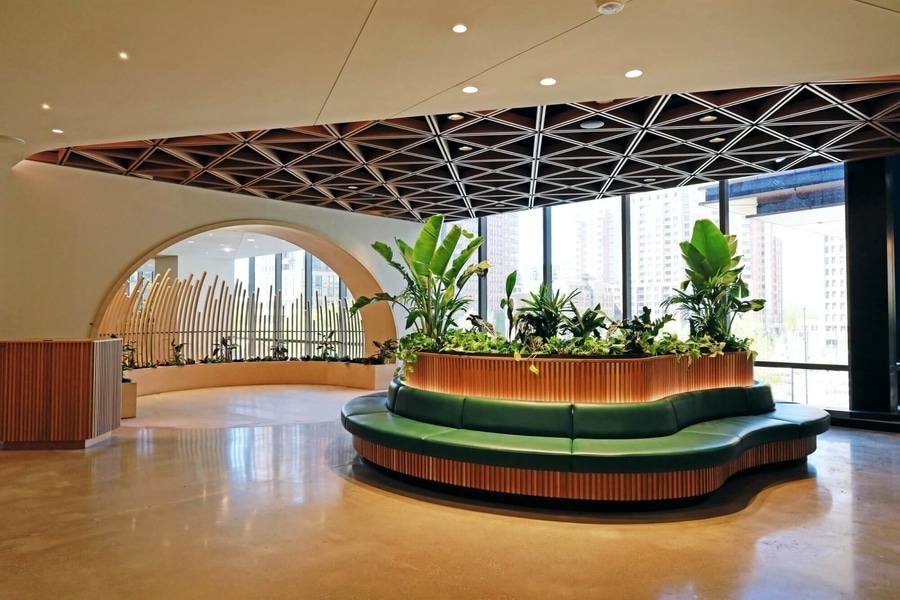
#COMMERCIAL ARCHITECTURE PROJECTS
Amazon releases first images of its ZGF- and NBBJ-designed Arlington HQ2
The first building in Amazon’s Arlington, Virginia HQ2 is set to open soon. The first phase of the ZGF– and NBBJ-designed project along South Eads Street near Pentagon City will open while the project’s second phase, as AN previously reported, is on hold.
The project came to Arlington in 2018 after fierce opposition from other publicly floated locations, including Queens, New York. Dubbed “HQ2” as the firm’s primary base outside of Seattle, the development in Arlington has received the more official name of Metropolitan (Met) Park, adopted from a nearby park. The project has been positioned as central to the DMV’s (Washington D.C., Maryland, and Virginia metropolitan area) growing status as a tech hub as private investors in the region, and some local governments, seek to diversify employment in the region from its traditional public sector, nonprofit, and defense jobs.
The e-commerce giant has framed the project as an example in terms of environmental efficiency, though that may be hidden to the initial eye beyond its nearly all-glass curtain wall facades. The phase of the development set to open soon has been built with low-carbon concrete and mass timber, and its operations run on 100 percent renewable energy. The company said that the buildings’ design strategies have led to a 24 percent energy savings in comparison to similar new office buildings, and a 20 percent reduction in their concrete carbon footprint relative to “the industry baseline.”
Amazon worked with Nova Scotia–based CarbonCure (which its Climate Pledge Fund is invested in) to specify a less carbon-intensive concrete mix, though concrete is still the largest component of the project’s total embodied carbon (which is not unique). Its reliance on electricity, with a grid sourced from a Virginia solar farm, cuts operational fossil fuel use.
More common water conservation practices including cooling towers, landscape irrigation and flushing fixtures that recycle water, and low-flow urinals, toilets, and lavatories that conserve water, were installed to further support the project’s environmental goals. The capture of rainwater, shower water, and HVAC condensate is projected to reduce water savings to half of building code requirements. Met Park is planned to include two acres of green roofs with native plantings (albeit in non-native rooftop settings), which include outdoor meeting spaces and an urban farm.
In what is possibly the project’s greatest environmental achievement, 82 percent of construction materials have been diverted from landfills. This includes 17,000 tons of concrete, drywall, metals, wood, cardboard, and plastic.
On the exterior, the firm’s Seattle home is brought to the east coast, due in part, one might suspect, to the choice to have two Pacific Northwest–based firms lead the design. The massing is reminiscent of commercial buildings in Seattle, though not entirely out of place in Arlington. A largely glass curtain wall, with bird-fritted glass, rises atop pilotis to leave the surrounding hardscaped plaza with more ground-level space. Orange motifs trail up the curtain wall and line the underside of awnings. A porous metal structure attached to the facade provides some shading.
The fairly standard facade envelopes a more lively interior, fitted with exposed concrete columns, timber ceilings, and cafe-style wooden furniture with green upholstery. As the nature of office work has radically shifted since HQ2’s plans were first revealed, Amazon’s investment in fixed office space will be put to the test in Northern Virginia.
